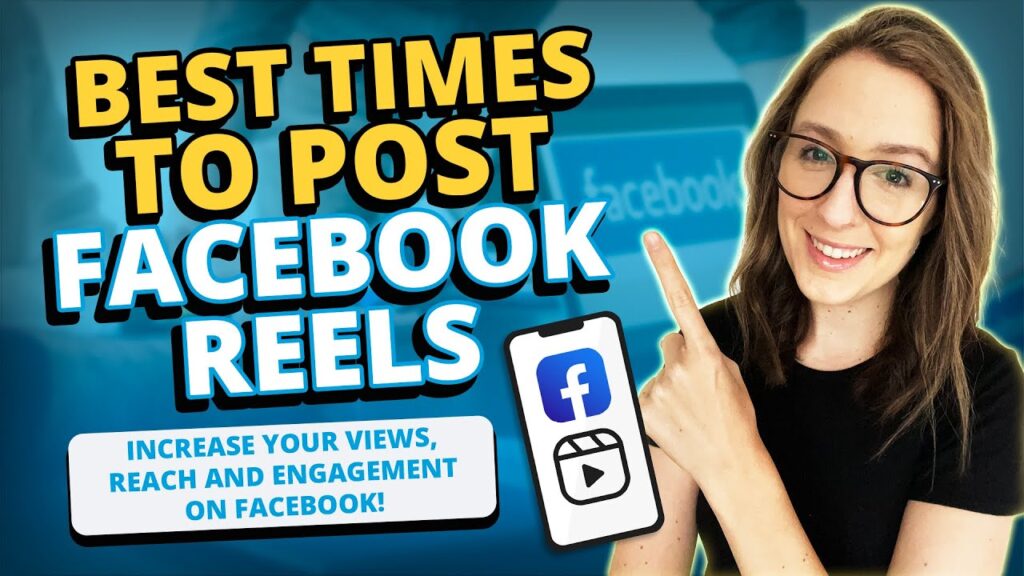Facebook ad campaign tips: optimize your ad copy, target relevant audience, use eye-catching visuals, and track your results for successful campaigns. Facebook is one of the most effective and budget-friendly platforms for businesses to reach their target audience.
However, creating facebook ad campaigns that generate high-quality leads and conversions can be a challenging task. With the right tools and techniques, you can optimize your facebook ad campaigns for maximum impact. In this article, we will provide you with some actionable tips on how to create effective facebook ad campaigns.
From crafting an attention-grabbing ad copy to targeting the right audience, we’ve got you covered. So, let’s dive in and explore the best practices to make your facebook ad campaigns a success.

Credit: murf.ai
Facebook Ad Campaign Strategy
When it comes to a facebook ad campaign, having a well-planned strategy in place is essential. Here are the key areas you should focus on when defining your facebook ad campaign strategy:
Defining Your Ad Campaign Objectives And Goals
Your objectives and goals should guide your entire ad campaign strategy, from the type of ad you choose to the audience you target. Determine what you want to achieve through your facebook ad campaign, whether it’s raising brand awareness, increasing website traffic, or generating leads.
Some common objectives include:
- Sales and conversions
- App installs and engagement
- Engagement and brand awareness
- Lead generation and customer acquisition
Determining Your Target Audience
Defining your audience is crucial to the success of your facebook ad campaign. You don’t want to waste money on ads that aren’t being shown to the right people.
Consider the following when determining your target audience:
- Demographics: Age, gender, location, language
- Interests: Hobbies, likes, and dislikes
- Behaviors: Purchasing, device usage, job titles
Researching Your Competition
Analyzing what your competitors are doing can help you identify gaps in the market and improve your ad campaign’s success rate. Look at what they’re advertising, the audience they’re targeting, and the ad format they’re using.
Defining Your Unique Selling Proposition (Usp)
Your unique selling proposition (usp) is what sets you apart from your competitors. Defining this will help you create compelling ads that draw in your target audience.
Your usp could be:
- The quality of your product or service
- Quick delivery times
- A unique feature or benefit that your product or service offers
Creating And Outlining Your Ad Campaign Strategy
Developing a clear and concise facebook ad campaign strategy is essential to its success. Here are some key things to consider:
- Ad format and creative
- Budget and bidding strategy
- Ad placement
- Tracking and measuring your results
By following these tips, you can create a winning facebook ad campaign strategy that will help you achieve your business objectives.
Crafting Attention-Grabbing Ads
In today’s digital era, facebook is considered one of the most effective channels to increase brand awareness and conversion. Successful ads on facebook need to be eye-catching, persuasive, and inspiring. Attention-grabbing ads on facebook call for creative approaches and the ability to understand the platform’s ad formats and options, creating targeted ad copy, selecting captivating images or videos, placing the ads strategically, and having a compelling call-to-action.
In this section, we will explore the best practices for crafting attention-grabbing ads on facebook.
Understanding Facebook’S Ad Formats And Options
Whether you’re looking to increase your brand’s visibility, engage with your followers or drive more sales, facebook offers a wide range of ad formats and targeting options to choose from. Here are some key ad formats and options to keep in mind:
- Image ads: A single image ad is the most commonly used format on facebook. It consists of one image, headline, text, and link description.
- Carousel ads: Carousel ads are best for showcasing multiple products or services. These ads include two or more scrollable images or videos that users can click through.
- Video ads: Video ads are a great way to promote brand awareness, build trust, and explain complex products or services quickly.
- Facebook offers various placement options, including newsfeed ads, stories ads, and marketplace ads.
Creating Compelling Ad Copy That Resonates With Your Target Audience
Copywriting for facebook ads is different from any other type of copywriting. Your ad copy should speak directly to your audience and inspire them to take action. Here are some tips to create compelling ad copy:
- Start with a strong headline that catches attention and sparks curiosity.
- Use short and straightforward sentences that are easy to understand.
- Highlight the unique benefits of your products or services.
- Use power words and emotional triggers to persuade your audience.
- Make sure your copy aligns with your image or video.
Selecting Eye-Catching Images Or Videos
Images and videos are critical components of a successful facebook ad. Your images or videos should be visually appealing and reflect your brand’s style and personality. Here are some best practices for selecting eye-catching images or videos:
- Use high-quality images or videos that are relevant to your product or service.
- Keep your images or videos uncluttered and focus on your product or service.
- Use bright colors and contrasting colors to make your ad stand out.
- Keep your images or videos consistent with your brand’s style and personality.
Incorporating A Strong Call-To-Action (Cta)
Your cta is an essential element of your ad copy because it tells your audience what they need to do next. Your cta should be clear, concise, and aligned with your campaign goals. Here are some tips for incorporating a strong cta:
- Keep it simple and direct. A clear cta can increase clicks by up to 20%.
- Use power words like “now,” “limited offer,” and “exclusive.”
- Align your cta with your campaign goals. For example, if your goal is to increase sign-ups, use “register now” as your cta.
Ad Placement And Targeting Tactics For Maximum Impact
Ad placement and targeting are crucial elements of successful facebook campaigns. You must be strategic when placing your ad and targeting your audience to maximize your impact. Here are some tips for ad placement and targeting tactics:
- Use facebook’s detailed targeting options to reach the right audience based on demographics, interests, behaviors, and more.
- Test multiple ad placements to determine which one is the most effective for your campaign goals.
- Use facebook’s ad placement options, including newsfeed ads, stories ads, and marketplace ads, to reach your audience where they are most likely to engage with your brand.
Following these best practices for crafting attention-grabbing ads on facebook can significantly improve your ad’s performance and increase your return on investment. By understanding facebook’s ad formats and options, creating targeted copy, selecting captivating images or videos, incorporating a strong cta, and optimizing your ad placement and targeting, you can create ads that resonate with your audience and inspire them to take action.
Implementing Facebook Pixel
Understanding The Basics Of Facebook Pixel
When it comes to successful facebook ad campaigns, facebook pixel is an essential tool to help you track actions taken on your website, optimize ads, and retarget people who have shown interest in your business. Here’s what you need to know about facebook pixel:
- Facebook pixel is a code that you put on your website, which collects data about the actions people take on your website after clicking on your facebook ad.
- You can use this data to track conversions, optimize ads based on actions taken on your website, and retarget people who have already shown interest in your business.
- Facebook pixel can help you gain insights into your audience, such as their demographics, location, and device information.
Creating And Installing Your Pixel Code
Installing facebook pixel is a straightforward process, and it involves creating the pixel code and adding it to your website. Here’s how to do it:
- To create a facebook pixel, go to your facebook ads manager, click on the “pixels” tab, select “create a pixel,” and follow the instructions.
- Once you have created your pixel, copy the code and add it to the header of your website. You can do this by adding the code to your website’s header template or manually pasting it to every individual webpage.
- After installing the facebook pixel, verify that it’s working correctly by clicking on the “actions” tab, selecting “view pixel,” and checking for “event data received.”
Using Pixel Data For Optimization And Retargeting
Once you have installed facebook pixel, you can use the data to optimize your ad campaigns and retarget people who have already shown interest in your business. Here’s how:
- To optimize your ad campaigns using facebook pixel data, you can create custom audiences based on specific actions people have taken on your website. For example, you can create a custom audience for people who have added items to their cart but haven’t made a purchase.
- To retarget people who have shown interest in your business, you can create a lookalike audience based on your website traffic, which targets people who have similar interests to those who have interacted with your website.
Tracking Conversions And Attributing Roi
Tracking conversions and attributing roi is an essential aspect of facebook pixel, helping you understand the effectiveness of your ad campaigns. Here’s how to track conversions and attribute roi:
- To track conversions, you need to add an event code to the relevant pages on your website. For instance, adding the code to your thank you page will enable you to track when people make a purchase or fill out a lead form.
- To attribute roi, you need to set up conversion tracking and assign a value to each conversion. This will help you determine the revenue generated by your ad campaigns and assess their effectiveness.
Implementing facebook pixel can help you gain valuable insights into your audience, optimize your ad campaigns, and maximize your roi. By following these tips, you can use facebook pixel effectively and take your ad campaigns to the next level.
Budgeting For Success
Understanding Facebook’S Ad Auction System
Facebook’s ad auction system is a competitive process that determines which ads are shown to facebook users and when. Here are the key points to understand:
- Ad relevance score – facebook assigns each ad a relevance score from 1 to 10 based on its relevance to the target audience. Ads with higher scores may win auctions and cost less than ads with lower scores.
- Bid amount – you can set a maximum bid amount for each ad auction. The bid is the maximum amount you are willing to pay for someone to click on your ad.
- Estimated action rate – facebook predicts how likely it is that someone will take the action you want them to take, such as clicking on your ad or making a purchase. The higher the estimated action rate, the more likely your ad is to win the auction.
Defining Your Ad Campaign Budget And Bidding Strategy
To create a budget and bidding strategy for your facebook ad campaign, consider the following:
- Business goals – what do you want to achieve with your ad campaign? Are you looking to increase brand awareness, drive website traffic, or encourage sales?
- Target audience – who is your target audience? What do they care about? Tailoring your ad campaign to their interests will increase the chances of success.
- Ad format – there are different ad formats available on facebook, such as image ads, video ads, and carousel ads. Choose the type that will best resonate with your audience and meet your business goals.
- Bidding strategy – there are several bidding strategies you can choose from, such as manual bidding, automatic bidding, and target cost bidding. Consider the pros and cons of each and choose the one that is most suitable for your campaign.
Determining The Right Ad Delivery For Your Campaign
Your ad delivery strategy affects who sees your ad and how often. Here are some things to keep in mind:
- Ad placement – you can choose where your ad is displayed, such as in the news feed, on the right-hand side of the page, or in the audience network. Each placement has its own benefits and drawbacks.
- Delivery optimization – facebook offers a few optimization options, including link clicks, impressions, and daily unique reach, to ensure your ads are delivered to the right audience.
- Scheduling – you can choose when your ads are shown to your audience, such as during specific hours of the day, certain days of the week, or for a specified duration of time.
Allocating Budget To Optimize Roi And Minimize Cost-Per-Click (Cpc)
To optimize roi and minimize cpc, try these tips:
- Test multiple ad sets – creating multiple ad sets with different targeting parameters can help you identify which ads are performing well with which audiences.
- Use retargeting – create ad sets that are targeted to people who have interacted with your brand before, such as visited your website or engaged with your facebook page.
- Optimize ad delivery – adjust your ad delivery settings to prioritize ads that are performing well, which can help improve campaign roi.
- Monitor ad performance – keep track of your ad metrics, such as click-through rate (ctr) and relevance score, to identify areas where you can optimize your campaign and allocate budget to the highest-performing ads.
Frequently Asked Questions For Facebook Ad Campaign Tips
How Can I Improve My Facebook Ad Targeting?
Improve ad targeting by using custom and lookalike audiences, demographic filters, interests, behaviors, and location. Also, use the facebook pixel to target visitors who have interacted with your website.
What Is The Best Ad Format For Facebook?
The best ad format depends on the campaign objectives. For driving traffic to your website or generating leads, use single image or video ads. For boosting engagement and brand awareness, use carousel and collection ads.
How Can I Create An Effective Facebook Ad Copy?
An effective facebook ad copy is short, direct to the point, and speaks to your target audience. Use power words, clear value propositions, and a call-to-action. Use captivating headlines and use storytelling techniques to build an emotional connection.
How Do I Measure The Success Of My Facebook Ad Campaigns?
Use facebook ads manager to track your campaign metrics such as reach, impressions, engagement, clicks, and conversions. Measure the cost-per-action (cpa) and return-on-ad-spend (roas) to determine campaign success.
What Is The Best Bidding Strategy For Facebook Ads?
The best bidding strategy depends on your campaign objectives. For optimizing conversions at the lowest cost, use automatic bidding. For controlling your bids and targeting a specific audience, use manual bidding. Use bid caps to limit your maximum bid.
How Can I Optimize My Facebook Ad Campaigns?
Optimize facebook ad campaigns by split-testing ad creatives, targeting, bidding, and placement. Use data analytics for optimizing campaigns based on higher click-through rates, conversion rates, and lower costs. Remember to test a single variable at a time for optimal results.
Conclusion
To sum up, creating a successful facebook ad campaign requires strategic planning and implementation. By setting clear goals, developing a target audience, selecting the right ad format, using compelling visuals, and conducting thorough testing and optimization, you can improve your chances of achieving a high roi and reaching your desired audience.
Keep in mind that facebook constantly evolves, so it’s important to stay up to date with new features and changes in the platform. With the tips outlined in this post, you can maximize your facebook ad campaigns and improve your overall digital marketing strategy.
Happy advertising!


